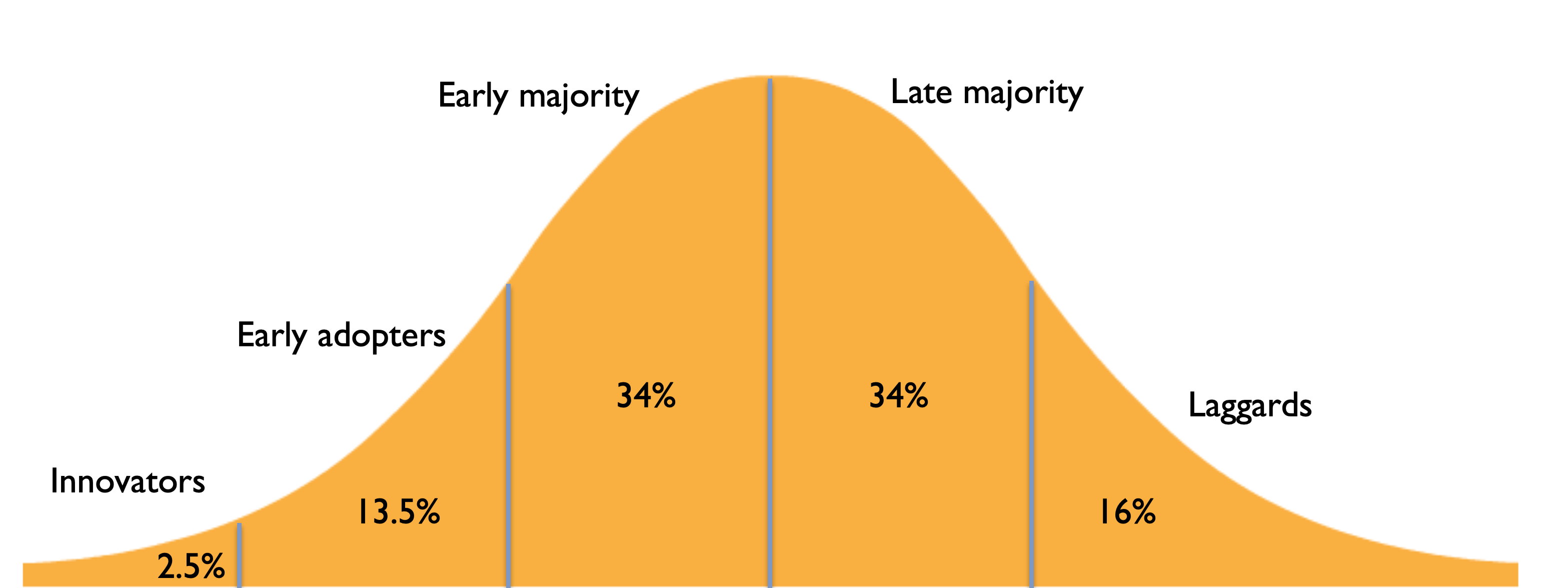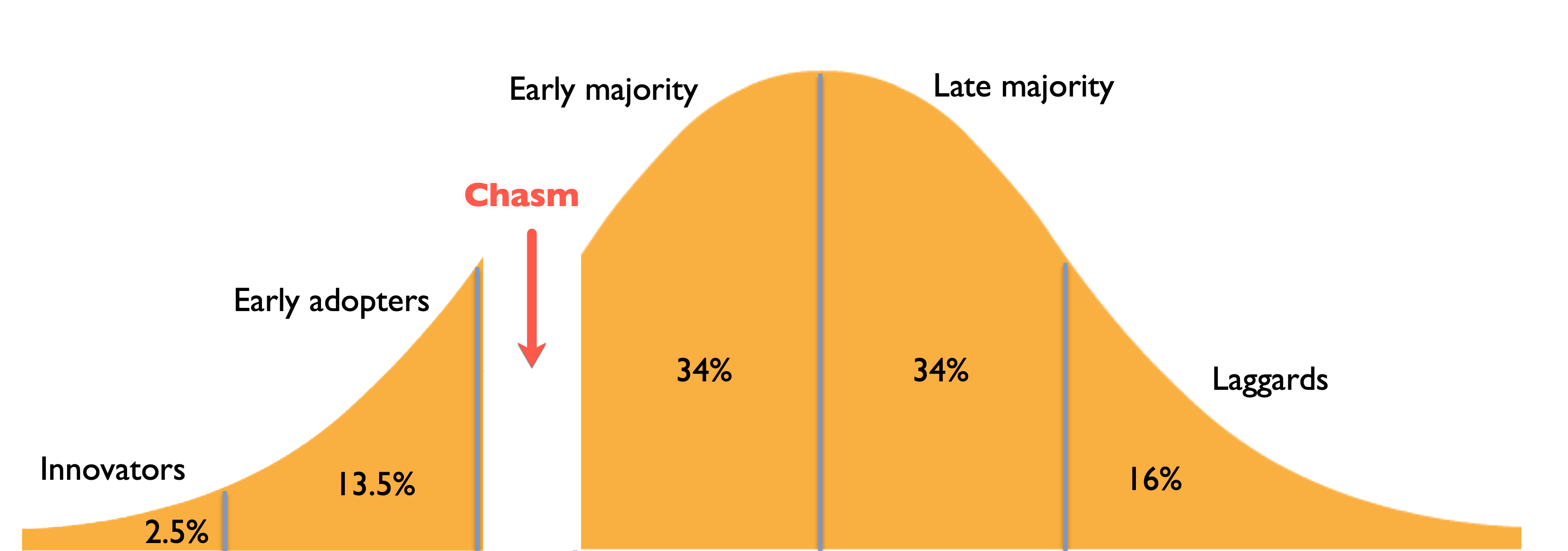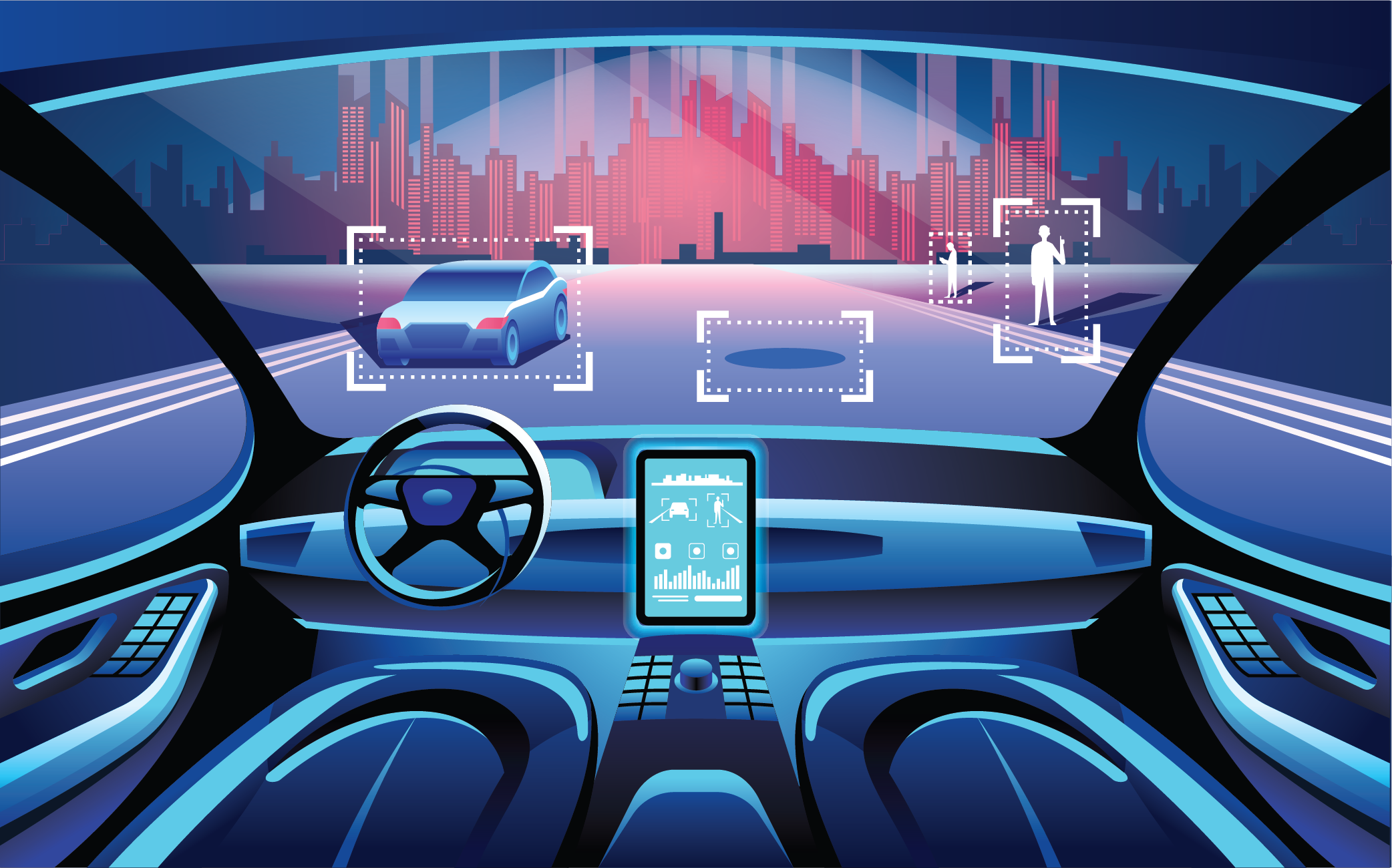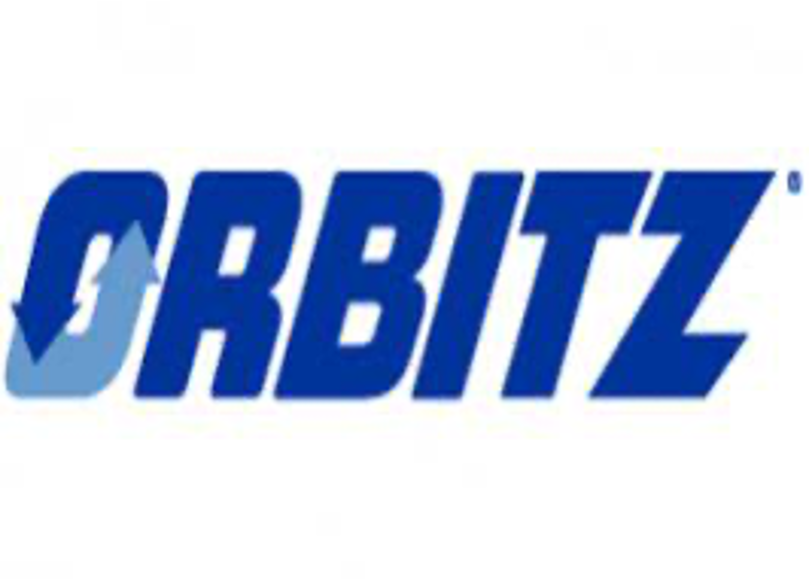Consumer Response to Innovation and Technology
Technology in Society
Interactions between technology and society are complex.
- Societal needs lead to technological change
- Technology drives social change


Original technology/innovation adoption cycle

Early vs. mainstream market
Visionaries
- Adventurous / take risks
- Think / spend big
- Want to stand out
- Follow their own dictate
- Motivated by future opportunities
- Want revolutionary products and solutions
Pragmatists
- Prudent / manage risk
- Reasonable / within budget
- Want to adopt in a herd
- Consult colleagues and peers
- Motivated by present problems
- Want evolutionary products and solutions
A chasm exists between these two groups of adopters.
Revised technology/innovation adoption cycle

Overview of the simulation
You are a co-founder of Conveyance, a six-year old company that creates software and hardware customization packages for self-driving vehicles (SDVs).
Your product has garnered significant interest and adoption from early adopters in several markets. Investors are pleased with your performance and are now expecting exponential growth through wider adoption.

How do you cross the chasm?
D-Day Analogy (Allied invasion of Normandy during WWII)
- Objective:
- Cross the chasm (the English Channel) and invade Europe
- Method:
- Select a point of attack (Normandy coast)
- Attack with overwhelming force (195,000 troops, 5,000 ships)
- Move outward from the point of attack to other targets and capture the center

How do you cross the chasm?
- Objective:
- Cross the chasm
- Method:
- Select a point of attack (beachhead segment)
- Big enough to matter, but small enough to lead (a big fish in a small pond)
- Attack with overwhelming force on a specific target
- Offer the whole product as a complete solution to their needs
- Assemble all necessary partners for the end-to-end solution
- Move outward from the point of attack to other targets and capture the center (the bowling pin effect)
- The beachhead has reference value for others
- Beachhead pins should knock down either new segments or new applications for the existing segment
- Select a point of attack (beachhead segment)
The rise of the algorithm
In our increasingly data-driven world, companies use algorithms to assist in decision making and optimization of a variety of outcomes.
Concerns arise when algorithms produce outcomes that disadvantage or privilege a certain group of people based on characteristics such as gender, race, sexual orientation, religion, age, therefore discriminating against that group.
While some forms of discrimination is illegal, others are lawful, and laws are not necessarily consistent across countries.
Algorithmic bias in marketing
Promotion

- STEM career ads on Facebook were displayed more frequently to young men than young women, despite the desire of the advertiser to be gender neutral in delivery of ad.
- Seems to be due to Facebook’s cost minimizing algorithm.
- Algorithmic bias still occurs even if the cost to display ads to different groups is the same. Facebook’s algorithm will show the ad disproportionally more to groups that are more likely to engage with the ad.
Algorithmic bias in marketing
Pricing
- Insurance and lending notoriously discriminate on price.
- Minorities and women are known to receive worse lending and credit terms than white men.
- Car insurance prices vary based on age and gender.
Price discrimination is often explained by perceived behavioural differences (young women drivers are less risky than young men drivers; people with higher income are more likely to repay the loan, etc.) - but behavioural differences are often correlated with characteristics such as age, gender, race, or ethnicity.
Algorithmic bias in marketing
Pricing
- On average, Mac users spend more on a hotel night than PC users
- Orbitz’s algorithms shows Mac users costlier travel options
- Dynamic pricing: prices change continuously based on current supply and demand
- Study found that trips with origin or destination areas with large African-American populations were consistently more expensive than other trips


Algorithmic bias in marketing
Product
- Amazon’ plan to optimize cost and efficiency was to first roll out the service in areas with high concentration of Prime members, and then expand to other areas over time.
- Areas with high concentration of Prime members were predominantly white.
- Non-white neighbourhoods were excluded from the service.

